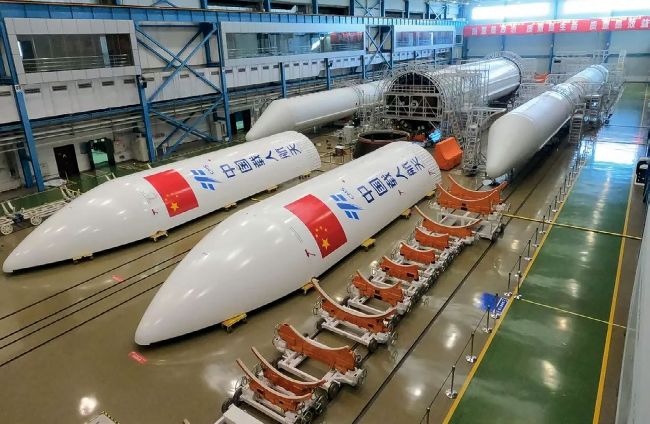Tiangong
CHINA’S MODULAR SPACE STATION
A SYMBOL OF CHINA’S TECHNOLOGICAL PROWESS AND THE VALUE OF GLOBAL SCIENTIFIC CORROBORATION
Reported by Daisy Dobrijevic

© Adrian Mann
The Tiangong (‘Heaven’s Palace’) program has been declared a top priority for the China National Space Administration’s (CNSA) schedule this year. The three-module station will focus on research spanning astronomy, life sciences, material sciences and combustion. The nation is planning 11 missions in 2021 and 2022 to build the station, including three module launches, four Tianzhou cargo ship missions and four Shenzhou crewed missions.
The ambitious project is particularly impressive considering China began space exploration later than the US and Russia. We don’t know when China’s space program really started, as much of the program evolved largely in secret while it was under the joint control of the Chinese military and the Commission for Science, Technology and Industry for National Defense. In 1964 the space program was managed by the Seventh Ministry of Machine Building, which in 1983 became the Ministry of Aerospace Industry. In 1993 the CNSA was officially founded, roughly 34 years after NASA, when the ministry was split into the CNSA and the China Aerospace Science and Technology Corporation (CASC). While the CNSA is largely responsible for policy, the CASC is responsible for the execution of procedures, including Tiangong.
China’s modular space station will be about one-sixth the size of the International Space Station (ISS), a project that China has been unable to get involved with since being banned from the venture by the US in 2011. Though it is unclear exactly why the US decided to ban China, it is speculated that China’s fledgling space agency was seen as too inexperienced to contribute significantly to the ISS, and with additional security concerns raised by the US, China was prevented from even setting foot on the station.

Construction of the Long March 5B rocket that will launch the core module, called Tianhe
© CMSA
Despite the US freezing China out of space cooperation opportunities, it hasn’t stopped the nation from making substantial progress in the space sector. In fact, the tables could turn in the near future, as the ISS is nearing the end of its operational life just as Tiangong will be starting out. Though Tiangong will be a fraction of the size of the ISS, there may come a point in time in which it is the only space station in operation, making it a very valuable commodity. How this could influence both exploration and research in space is yet to be determined, as there is currently no formal end date for ISS operations. “While the ISS is currently approved to operate through at least December 2024 by the international partner governments, from a technical standpoint we have cleared the ISS to fly until the end of 2028,” said NASA officials.